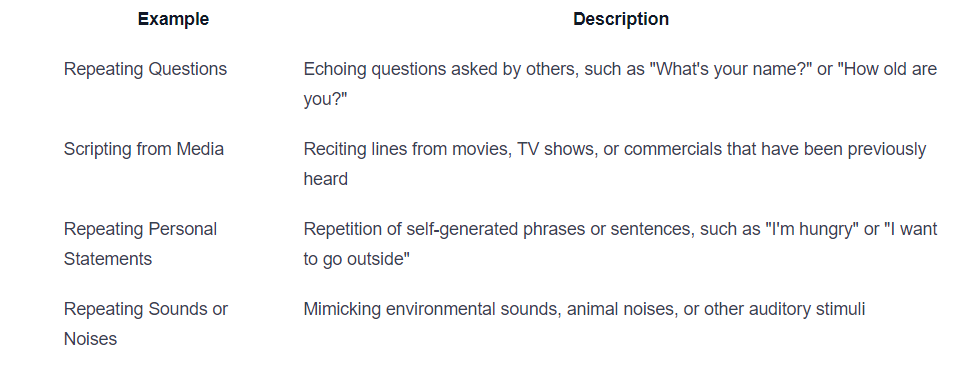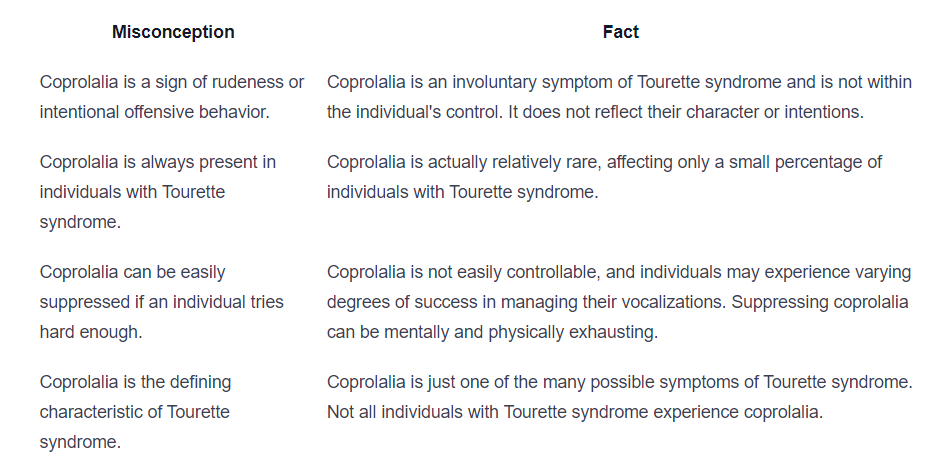Types of Vocal Stims
Discover the fascinating world of vocal stims! Explore the different types and characteristics in this insightful guide. Uncover the diversity of expression.

Understanding Vocal Stims
Vocal stims are a form of self-stimulatory behavior that involves making sounds or vocalizations. They are commonly observed in individuals with neurodevelopmental conditions such as autism spectrum disorder (ASD) and Tourette syndrome. Understanding vocal stims is essential for creating an inclusive and supportive environment for individuals who engage in these behaviors.
What Are Vocal Stims?
Vocal stims, also known as vocal stereotypies, refer to repetitive vocal behaviors that serve a self-regulatory or self-soothing purpose. These behaviors can manifest in various forms, including echolalia, palilalia, verbal tics, and non-verbal vocal stims.

Vocal stims can take the form of repetitive sounds, words, phrases, or noises. They may be spontaneous or triggered by certain situations or emotions. While vocal stims are often associated with neurodevelopmental conditions, it's important to note that they can also occur in individuals without a diagnosed condition.
Importance of Recognizing and Understanding Vocal Stims
Recognizing and understanding vocal stims is crucial for promoting acceptance, empathy, and support for individuals who engage in these behaviors. By raising awareness about vocal stims, we can reduce stigma and misconceptions surrounding them.
Understanding vocal stims allows us to differentiate between intentional communication and self-stimulatory behavior. It helps to avoid misinterpretation or misunderstanding of an individual's intentions or capabilities. By recognizing vocal stims as a valid form of expression, we can foster a more inclusive and respectful environment for individuals who engage in these behaviors.
By providing education and promoting understanding, we can encourage acceptance and support for individuals with vocal stims. This includes creating spaces where individuals feel comfortable expressing themselves without judgment or criticism. It also involves advocating for accommodations and strategies that can help individuals manage their vocal stims in a way that is both comfortable for them and respectful to those around them.
Recognizing and understanding vocal stims is an important step towards creating a more inclusive society that values and celebrates the diversity of human expression. By embracing and accommodating different forms of communication, we can foster a sense of belonging and acceptance for everyone.
Echolalia
Echolalia is a type of vocal stim that involves the repetition or imitation of words or phrases spoken by others. It is commonly observed in individuals with certain developmental disorders, such as autism spectrum disorder (ASD) or language delays. Understanding the definition and characteristics of echolalia is important in recognizing and supporting individuals who engage in this vocal stim.
Definition and Characteristics of Echolalia
Echolalia refers to the immediate or delayed repetition of words, phrases, or sounds that are heard. This can include repeating words spoken by others, repeating one's own words, or even repeating sounds or noises. Echolalia can be categorized into two main types:
- Immediate Echolalia: This form of echolalia involves the immediate repetition of words or phrases after hearing them. For example, if someone says "How are you?" the individual may respond by repeating the exact same question.
- Delayed Echolalia: Delayed echolalia refers to the repetition of previously heard words or phrases after a certain period of time has passed. This can include repeating lines from movies, television shows, or conversations that occurred in the past.
Echolalia can serve different functions for individuals. It may be a way for them to process and understand language, practice communication skills, or express their emotions. It is important to note that echolalia is not always a sign of a lack of understanding or simply repeating without meaning. It can be a meaningful and functional form of communication for some individuals.
Common Examples of Echolalia in Vocal Stims
Echolalia can manifest in various ways, and the examples can differ depending on the individual and their unique circumstances. Here are some common examples of echolalia in vocal stims:

It's important to approach echolalia with understanding and consider the individual's context and communication needs. Echolalia can provide insights into their language processing abilities and serve as a bridge for further communication development. Encouraging meaningful interactions and providing alternative modes of communication can help individuals with echolalia expand their language skills and engage in more diverse forms of communication.
Palilalia
Definition and Characteristics of Palilalia
Palilalia is a type of vocal stim characterized by the repetition or echoing of one's own words or phrases. Individuals with palilalia may involuntarily repeat words or phrases immediately after saying them, often in a delayed or altered manner. This repetition can occur multiple times, creating a loop-like pattern in their speech.
Palilalia is commonly associated with certain neurological conditions, such as Tourette syndrome, autism spectrum disorder, and certain forms of dementia. It is important to note that palilalia is not always present in these conditions and can also occur on its own.
Common Examples of Palilalia in Vocal Stims
Palilalia can manifest in various ways, and the examples below illustrate some common forms of palilalia in vocal stims:
- Immediate Repetition: The individual repeats their own words or phrases immediately after saying them. For example, if someone says, "I'm going to the store," they might repeat "going to the store" multiple times.
- Delayed Repetition: The repetition occurs after a short delay. For instance, if someone says, "I like ice cream," they might later repeat "like ice cream" without any immediate context.
- Altered Repetition: The repeated words or phrases may undergo alterations, such as changes in pitch, volume, or pronunciation. This alteration adds a unique element to the vocal stim. For instance, if someone says, "I'm feeling happy," they might repeat "feeling flappy" with a different intonation.
- Echolalic Repetition: In some cases, palilalia can overlap with echolalia, another type of vocal stim. Echolalic palilalia involves repeating words or phrases that were recently heard from others or from media sources. This repetition can occur immediately or after a delay.
Understanding palilalia and its various characteristics is crucial for recognizing and supporting individuals who engage in this type of vocal stim. By promoting awareness and acceptance, we can foster a more inclusive environment for individuals with different communication styles.
Verbal Tics
Vocal stims encompass a range of behaviors involving vocalizations. One specific type of vocal stim is known as verbal tics. In this section, we will explore the definition and characteristics of verbal tics, as well as understand the distinction between verbal tics and other vocal stims.
Definition and Characteristics of Verbal Tics
Verbal tics are involuntary vocalizations or utterances that occur repeatedly and uncontrollably. These vocalizations can take various forms, including repetitive sounds, words, phrases, or even entire sentences. Verbal tics are often spontaneous and occur without a specific purpose or intention.
Characterized by their repetitive nature, verbal tics can manifest as simple or complex vocalizations. Simple verbal tics involve brief and uncomplicated sounds, such as throat clearing, coughing, or sniffing. On the other hand, complex verbal tics consist of more intricate vocalizations, such as repeating words or phrases, using inappropriate language, or involuntarily mimicking someone else's speech patterns.
It's important to note that verbal tics are typically experienced as involuntary and are not under the individual's conscious control. They can be disruptive and interfere with daily activities, communication, and social interactions. However, it's crucial to approach verbal tics with understanding and empathy, recognizing that they are a manifestation of a neurological condition rather than a deliberate choice.
Distinction Between Verbal Tics and Other Vocal Stims
While verbal tics are a type of vocal stim, it's essential to differentiate them from other vocal stim behaviors. Vocal stimulations can include a wide range of vocalizations and sounds, such as humming, squealing, or making repetitive noises. Unlike verbal tics, which involve involuntary vocalizations, other vocal stims can be voluntary expressions used for self-regulation, sensory stimulation, or communication.
One key distinction between verbal tics and other vocal stims lies in the involuntary nature of verbal tics. Verbal tics are often experienced as urges that cannot be suppressed or controlled, whereas other vocal stims may be more intentional and within the individual's control. Additionally, verbal tics are associated with certain neurological conditions, such as Tourette syndrome, whereas other vocal stims may occur in individuals without specific conditions.
Understanding the characteristics and distinctions of verbal tics is important for creating an inclusive and supportive environment for individuals who experience these vocalizations. By recognizing that verbal tics are involuntary and differentiating them from other vocal stims, we can promote acceptance, reduce stigma, and foster empathy towards those who exhibit these behaviors.
Non-Verbal Vocal Stims
Vocal stims are not limited to verbal expressions. Non-verbal vocal stims encompass a diverse range of behaviors that involve vocalizations without the use of words or coherent speech. These stims can manifest in various ways and serve different purposes for individuals.
Definition and Examples of Non-Verbal Vocal Stims
Non-verbal vocal stims are repetitive vocalizations that do not involve the use of words. They can take the form of sounds, noises, or even musical tones. These vocalizations are often self-soothing or self-regulatory in nature and may help individuals with sensory processing differences to manage their emotions or sensory overload.
Examples of non-verbal vocal stims include:
- Humming or singing without recognizable words
- Making repetitive sounds or noises, such as squeaking, grunting, or whistling
- Vocalizing musical tones or melodies
- Producing rhythmic sounds, such as tapping or clapping
- Repeating specific sounds or syllables
It is important to note that non-verbal vocal stims may vary significantly among individuals. Some individuals may have unique vocalizations that are specific to their stimming behavior, while others may engage in more common vocalizations, such as humming or repetitive sounds.
Understanding the Diversity of Non-Verbal Vocal Stims
Non-verbal vocal stims demonstrate the diversity of stimming behaviors among individuals. Each person may have their own unique way of expressing themselves through vocalizations. It is essential to recognize and respect this diversity, as non-verbal vocal stims can play a significant role in self-expression, self-regulation, and overall well-being for individuals who engage in them.
By understanding the different types of non-verbal vocal stims, we can foster empathy and acceptance for individuals who engage in these behaviors. It is important to create an inclusive environment that acknowledges and accommodates the diverse ways in which individuals communicate and navigate their sensory experiences.
In the next sections, we will explore other types of vocal stims, such as echolalia, palilalia, and verbal tics, to further enhance our understanding of these behaviors and their significance for individuals.
Coprolalia
Definition and Characteristics of Coprolalia
Coprolalia is a type of vocal stim that involves the involuntary utterance of socially inappropriate or taboo words or phrases. It is most commonly associated with Tourette syndrome, a neurological disorder characterized by repetitive, involuntary movements and vocalizations known as tics.
The term "coprolalia" is derived from the Greek words "kopros" meaning "feces" and "lalia" meaning "speech." Despite its name, coprolalia does not exclusively involve the use of profanities related to feces. It can encompass a wide range of offensive, obscene, or inappropriate language.
Individuals with coprolalia may experience difficulty controlling these vocalizations. The occurrence of coprolalia can vary in frequency and intensity, with some individuals experiencing it more frequently than others. It is important to note that coprolalia is not a deliberate choice or a reflection of an individual's character or intentions. Instead, it is a symptom of the underlying neurological condition.
Addressing Misconceptions and Stigma Surrounding Coprolalia
Coprolalia is often misunderstood and stigmatized due to its association with Tourette syndrome. Misconceptions about coprolalia can contribute to social isolation, discrimination, and misunderstandings for individuals who experience it.
It is crucial to educate ourselves and society about coprolalia to foster empathy, understanding, and acceptance. By debunking common misconceptions, we can create a more inclusive environment for individuals with coprolalia and other vocal stims.

By dispelling these misconceptions and promoting understanding, we can create a more compassionate society that supports individuals with coprolalia and other vocal stims. It is important to remember that everyone deserves respect and acceptance, regardless of their neurological differences.
Sources
https://www.neurosparkhealth.com/blog/vocal-stimming-what-it-is-and-what-types-there-are.html
https://www.autismparentingmagazine.com/autism-children-vocal-stimming/
https://exceptionalindividuals.com/about-us/blog/stimming-in-autism-what-are-vocal-stims/
Similar articles
We’re here to help you

Our team is here to assist you in this process. Contact us for any assistance.
it’s easy to apply
We Accept Most Insurances
Our in-network insurance partnerships make ABA therapy more accessible to families throughout our service areas.







Our Insurance Process
We'll request your insurance details to help us verify your plan's coverage for ABA therapy. Once we've received this information, we'll walk you through your benefits, including copayments, deductibles and out-of-pocket maximums, so you know what to expect in advance.
Our team will then handle the preauthorization and all the necessary paperwork.
.svg)





















.jpeg)


































.jpeg)




.jpeg)







.jpeg)











.jpeg)
















